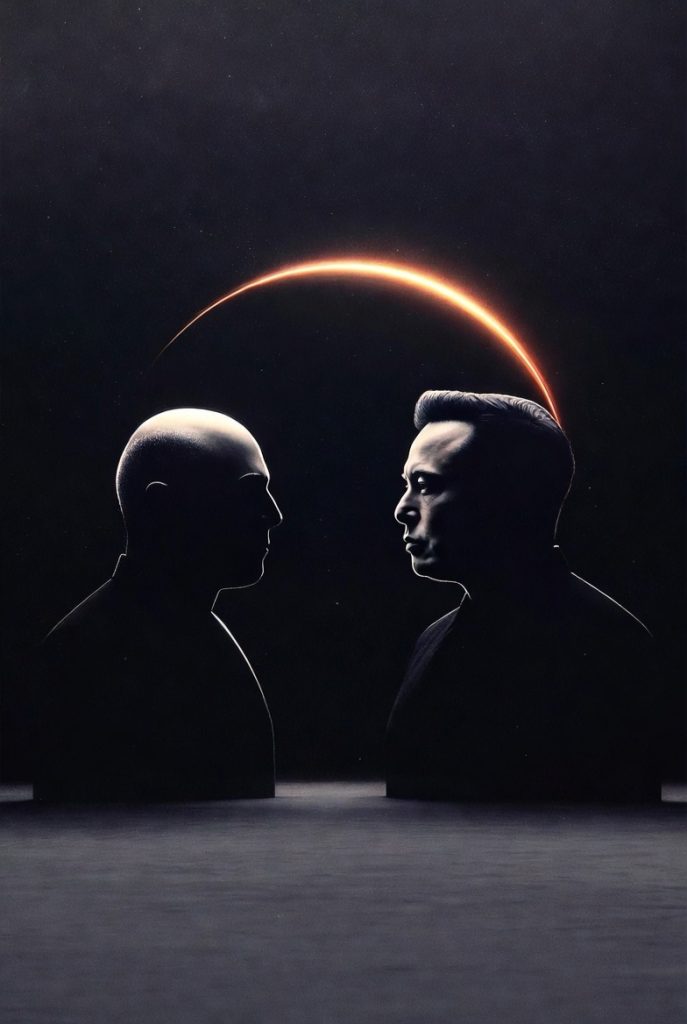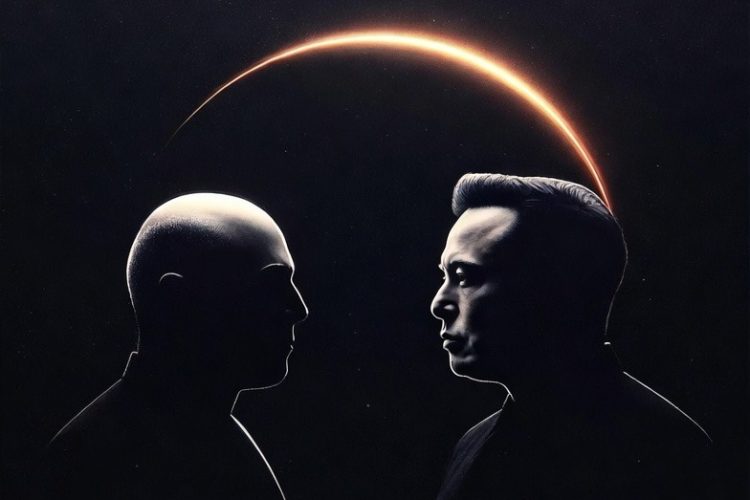Joe Rogan believes Elon Musk knows hidden truths about space and aliens due to his SpaceX contracts with NASA and the Department of Defense. Rogan says Musk must stay quiet on UFOs and extraterrestrial topics because of security clearances, and his dismissals seem calculated. A major reason is the interstellar comet 3I/ATLAS discovered in 2025, which shows strange non-gravitational acceleration, high nickel content, and an odd trajectory. Harvard’s Avi Loeb suggests it could be an alien probe or mothership, while Musk insists the anomalies come from natural outgassing and common comet composition. Despite Musk promising to reveal any real alien evidence on Rogan’s podcast, Rogan remains convinced the SpaceX founder is holding back major secrets about what’s really happening in our solar system.
Long Version
Joe Rogan’s Conviction: Elon Musk Holds the Keys to Space’s Deepest Secrets
In the vast expanse of space exploration, few figures loom as large as Elon Musk, the visionary behind SpaceX and its ambitious projects like the Starship rocket. Yet, according to podcast host Joe Rogan, Musk’s intimate involvement with NASA contracts and Department of Defense clearances suggests he possesses unparalleled insights into what’s truly unfolding in the solar system and beyond. During a recent episode of his podcast with filmmaker Dan Farah, Rogan didn’t mince words about his visit to SpaceX, expressing astonishment at the depth of knowledge Musk appears to hold. This sentiment echoes a broader fascination with extraterrestrial possibilities, from interstellar objects to conspiracy theories about alien probes, fueling speculation that Musk is privy to evidence the public can only guess at.
Joe Rogan’s Views on Musk’s Insider Knowledge
Rogan, a longtime enthusiast of topics like aliens, UFOs, and extraterrestrial intelligence, has hosted Musk multiple times on his podcast, delving into everything from space exploration challenges to the potential for life beyond Earth. Their conversations often blend hard science with speculative intrigue, touching on NASA’s role in monitoring the solar system and SpaceX’s groundbreaking advancements. Rogan’s belief stems from Musk’s unique position: as the head of a company launching satellites via the Starshield network and collaborating on missions that could detect unauthorized signals or anomalous phenomena, Musk operates at the intersection of commercial innovation and classified operations. Farah, producer of the documentary Age of Disclosure, reinforced this during the podcast, noting that contracts and clearances in space often involve exchanges of sensitive information.
At the heart of Rogan’s assertion is the idea that Musk’s outward dismissal of aliens might be a calculated facade. Rogan has observed that Musk is sly about such topics, outwardly dismissing UFOs while emphasizing that any extraterrestrial presence would be subtle. Rogan attributes this to Musk’s obligations under NASA and SpaceX contracts, suggesting he can’t speak freely on speculative matters. Rogan has even joked about his own outspoken nature preventing Musk from sharing everything. This perspective aligns with broader conspiracy theories suggesting that figures like Musk are bound by nondisclosure agreements, especially given SpaceX’s partnerships on critical infrastructure like asteroid detection and impact prevention systems.
Farah’s anecdote adds another layer: he screened Age of Disclosure at the National Space Symposium, where SpaceX representatives showed no surprise at revelations about non-human technology, implying insider knowledge. This event, known as the premier gathering for the space industry, underscores the tight-knit world of aerospace, where Musk’s ventures like Starship—designed for Mars colonization—intersect with potential discoveries of extraterrestrial origins.
The Discovery of Interstellar Comet 3I/ATLAS
A pivotal example fueling Rogan’s theory is the interstellar object known as 3I/ATLAS, a comet discovered on July 1, 2025, by the Asteroid Terrestrial-impact Last Alert System. This interstellar visitor, the third confirmed after ‘Oumuamua and 2I/Borisov, reached its closest point to the Sun, or perihelion, on October 30, 2025, at about 1.4 astronomical units—roughly 130 million miles. As it approached, astronomers noted its unusual brightness and behavior, prompting intense scrutiny. Recent images captured on November 17, 2025, using ground-based telescopes show jets of material emanating from the comet, highlighting its dynamic activity even post-perihelion.
NASA held a press conference on November 19, 2025, to share high-resolution imagery collected by multiple missions, including the Hubble Space Telescope. These images reveal multiple tails and complex structures, with the comet displaying a blue hue brighter than the Sun in certain wavelengths and a high carbon dioxide-to-water ratio in its plume. The comet’s trajectory, which skimmed close to Jupiter, Venus, and Mars, has been described as resembling a deliberate path, though natural gravitational influences explain much of it.
Anomalies and the Scientific Debate
3I/ATLAS has sparked debate due to its anomalous features, including non-gravitational acceleration—deviations in comet trajectory not fully explained by gravity alone. Measurements indicate a radial acceleration of about 1.1 x 10^{-6} astronomical units per day squared and a transverse component of 3.7 x 10^{-7}, suggesting forces beyond typical solar influences. Other peculiarities include an unusual nickel composition in its material, typically associated with industrial alloys, and tail orientations that deviate from standard cometary behavior.
Harvard astrophysicist Avi Loeb, a prominent voice in the search for extraterrestrial intelligence, has identified up to 12 anomalies, proposing that 3I/ATLAS could be an artificial construct, perhaps an alien mothership or reconnaissance device. Loeb links these traits to historical events like the Tunguska Event of 1908, a massive explosion in Siberia that flattened forests over hundreds of square miles, speculated by some to involve extraterrestrial material. He argues that the comet’s properties indicate alien evidence, potentially capable of continent-level destruction if it were to impact Earth.
However, many astronomers counter that these anomalies stem from natural processes. Non-gravitational acceleration is common in comets due to outgassing, where solar heating vaporizes ices, propelling the object like a natural rocket. The nickel abundance is explained by the comet’s origins in a distant stellar system, where such elements are prevalent in interstellar objects. Critics note that initial assumptions of it being a water-rich comet were premature, but subsequent data supports it as an unfamiliar interstellar iceberg, with jets and tails resulting from uneven heating and composition.
Elon Musk’s Response and Natural Explanations
Musk, for his part, has consistently maintained a skeptical stance on extraterrestrial life, emphasizing factual evidence over speculation. In a November 2025 podcast appearance with Rogan, Musk addressed 3I/ATLAS directly, dismissing the alien probe theory. He explained the nickel richness as typical for many comets and asteroids, noting that Earth’s nickel mines often originate from ancient meteorite impacts. Musk attributed the non-gravitational forces to outgassing, conserving momentum without artificial intervention, and argued that a nickel-heavy spacecraft would be inefficiently massive and destructive.
Rogan pressed Musk on the comet’s potential link to the Tunguska Event and its implications for alien evidence, but Musk reiterated that no concrete proof exists for extraterrestrial visits to our solar system. He emphasized the vastness of the universe, suggesting life is likely abundant but that any intelligent visitors would leave unmistakable signs.
Promises and the High Stakes of Disclosure
During the discussion, Musk made a notable promise: if he ever becomes aware of evidence of aliens, he will reveal it on Rogan’s podcast. He added a pointed caveat about never committing suicide, underscoring the high stakes and conspiracy-laden atmosphere surrounding space-related disclosures. This commitment highlights Musk’s push for transparency while navigating the boundaries of classified information.
Rogan’s podcast has amplified these ideas, blending them with broader themes of space exploration and the search for life. Despite Musk’s rebuttals, anomalies like unauthorized signals potentially detected around 3I/ATLAS keep speculation alive, with Loeb accusing space agencies of withholding data.
Broader Implications for Space Exploration
Ultimately, Rogan’s view positions Musk as a gatekeeper of cosmic truths, navigating the fine line between innovation and secrecy. As space exploration accelerates, driven by SpaceX’s reusable rockets and NASA collaborations, the quest for answers about aliens and our place in the universe remains compelling. Objects like 3I/ATLAS, with their interstellar origins, offer valuable insights into the solar system’s history and potential threats from asteroids or impacts.
The ongoing debate encourages advancements in detection technologies, from monitoring comet trajectories to analyzing compositions for signs of extraterrestrial intelligence. While Musk insists on empirical evidence and dismisses wild claims, the enduring mysteries of such visitors remind us that humanity’s understanding of the stars is still evolving. Rogan’s platform serves as a catalyst for these debates, bridging public curiosity with scientific inquiry.









